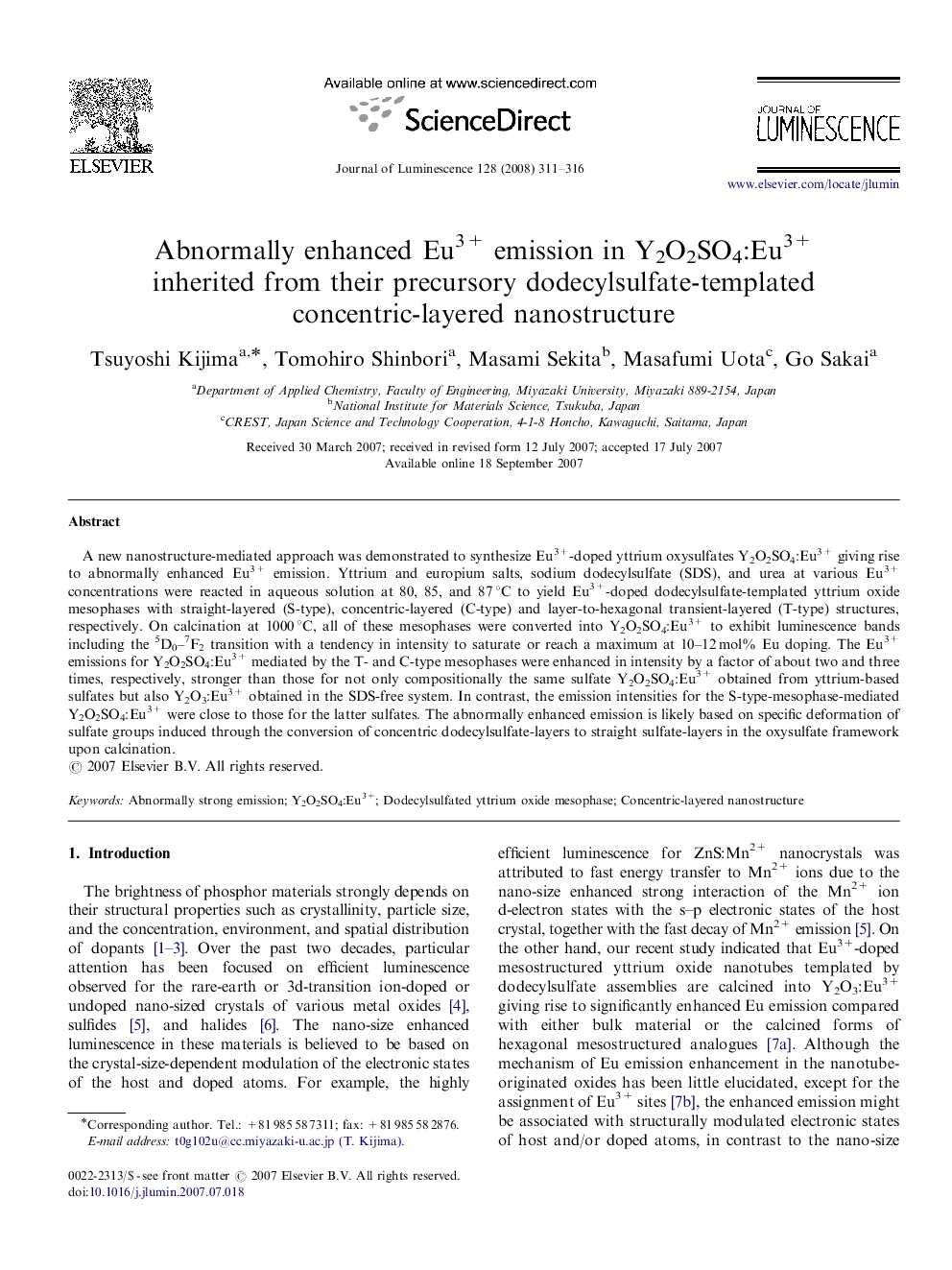| Article ID | Journal | Published Year | Pages | File Type |
|---|---|---|---|---|
| 5403790 | Journal of Luminescence | 2008 | 6 Pages |
Abstract
A new nanostructure-mediated approach was demonstrated to synthesize Eu3+-doped yttrium oxysulfates Y2O2SO4:Eu3+ giving rise to abnormally enhanced Eu3+ emission. Yttrium and europium salts, sodium dodecylsulfate (SDS), and urea at various Eu3+ concentrations were reacted in aqueous solution at 80, 85, and 87 °C to yield Eu3+-doped dodecylsulfate-templated yttrium oxide mesophases with straight-layered (S-type), concentric-layered (C-type) and layer-to-hexagonal transient-layered (T-type) structures, respectively. On calcination at 1000 °C, all of these mesophases were converted into Y2O2SO4:Eu3+ to exhibit luminescence bands including the 5D0-7F2 transition with a tendency in intensity to saturate or reach a maximum at 10-12 mol% Eu doping. The Eu3+ emissions for Y2O2SO4:Eu3+ mediated by the T- and C-type mesophases were enhanced in intensity by a factor of about two and three times, respectively, stronger than those for not only compositionally the same sulfate Y2O2SO4:Eu3+ obtained from yttrium-based sulfates but also Y2O3:Eu3+ obtained in the SDS-free system. In contrast, the emission intensities for the S-type-mesophase-mediated Y2O2SO4:Eu3+ were close to those for the latter sulfates. The abnormally enhanced emission is likely based on specific deformation of sulfate groups induced through the conversion of concentric dodecylsulfate-layers to straight sulfate-layers in the oxysulfate framework upon calcination.
Related Topics
Physical Sciences and Engineering
Chemistry
Physical and Theoretical Chemistry
Authors
Tsuyoshi Kijima, Tomohiro Shinbori, Masami Sekita, Masafumi Uota, Go Sakai,
